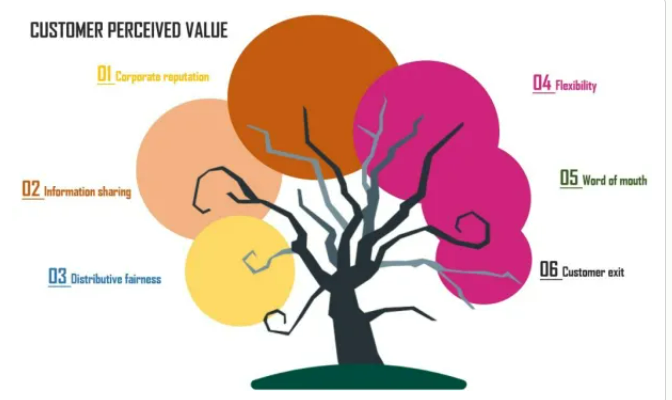The Power Of Customer Perceived Value
Customer Perceived Value is a concept used to measure the quality of any given transaction or interaction between a customer and a company. It is an evaluation of the customer’s experience of what the customer needs and wants. Customers’ perception of value includes their perceived benefit from doing business with a certain organization. The more clearly the customer understands the benefits of what they are purchasing, the more likely they will purchase again.
Value is a vital element to the success of any enterprise, but a company needs to recognize where they are in the process of achieving their goal. The goal of a company is to increase its market share by engaging customers in purchases that exceed their needs and demands.
The ultimate objective of a marketing plan is to increase market share. A company must achieve this to maintain current customer segments and obtain new components of customers in the future.
Importance for Marketers
Marketers must also recognize their goals and objectives, which must be clearly defined when establishing a company marketing strategy. Customer Perceived Value should be integrated effectively into the marketing strategy.
Each company’s marketing strategy should be based on a unique mix of factors that maximize its potential to reach and capture a given target audience and maximize its potential to create a customer base. This core concept is at the heart of each firm’s value creation process.
Marketers need to realize that marketing is not a one-time event. Instead, it is a process that occurs over a series of events. For example, marketing a product or service requires knowledge of the target audience. A comprehensive understanding of the product or service, and a plan to reach out to and engage with potential customers.
These three elements – knowing who we are, developing a compelling message, and communicating that message effectively, are the foundation of building a customer base. Moreover, all three of these components will play a vital role in how well and effectively a firm communicates its offerings and creates an advantage over its competitors.
In short, marketers must continually develop and improve their ability to communicate with customers more consistently. Doing so will lead to more sales and a more substantial customer base. If customers don’t believe that you can provide what they need, they won’t buy from you.
But suppose customers do think that you can provide what they need. In that case, you can develop a targeted marketing strategy that includes creating a value-added experience for customers, developing a clear understanding of your target audience, and developing an effective and efficient marketing plan.
With the right strategy and focus, marketers can ensure that they create opportunities that bring more customers and clients into their organization.
Also Read – WordPress vs. Headless WordPress for Your Website
Usability of Offering
It is an essential element to the success of any marketing environment. Customers need to be comfortable using what is being offered to them regularly. It is also important to understand what they are not comfortable with and address those needs. The three “P’s” of a thriving marketing environment are Presentation, Product or Service, and Practice.
Presentation
Presentation is how the product or service is presented to the customers. A good marketing concept must be integrated with a presentation to make the customer comfortable purchasing or using the product or service.
One important key to remember with this particular customer relationship management strategy is that a person who looks at your offerings wants value for their money. Your goal as a marketer is to provide value and deliver that value consistently.
Product or Service
What is the customer perception of your product or service? In essence, what a customer perceives about a product is often referred to as customer expectations. Customer expectations can change over time, which is why it is essential to address them frequently.
The primary focus is to identify customer perceptions and then take steps to mitigate any negative repercussions that they might have. For example, suppose a customer perceives that you’re only making products that are of poor quality.
In that case, you will have to make sure that you continually improve your production standards to meet customer demand. Likewise, if they perceive that you offer poor-quality products, you need to work on ways to constantly improve your product or service.
Experiences
What are customer perceptions about your company’s customer experiences? The critical issue here is knowing how to address customer perceptions. For example, some customers may feel that your offerings involve poor quality or are challenging to work with.
Read More – Magento E-commerce Development Benefits for Your Online Business Needs
Conclusion
The perception of customers can be a powerful driver of business development. And customers perceive value provided through processes can be a useful guide to improving company performance. It is necessary to create and support a culture of customer satisfaction so that the strategy organization works. With understanding what their business means to you and what they can gain by purchasing your products and services.
Although to gain an advantage in today’s complex markets, organizations need to think more as groups. This will allow organizations to reap the benefits of their resources without wasting time trying to build individual member-based teams. Instead, organizations should use their human capital to build on the strengths of each other. The advantages of building a team of people who share the same customer perceived value, rather than different ones, are numerous.




